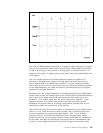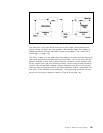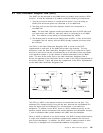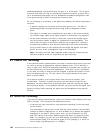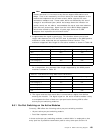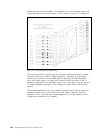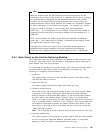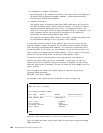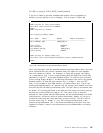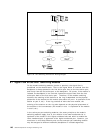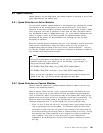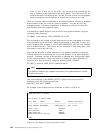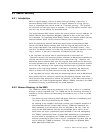
Note
With the 18-port active per-port switching module the lobe ports can be
distributed concurrently across a total of 11 segments which can be a mixture
of backplane token-ring segments and isolated segments on the module.
However, on the same per-port switching module you cannot allocate an
isolated segment number which matches the number of a backplane segment
to which other ports on the module are attached. For example, you cannot
assign any ports to isolated_1 if you already have ports assigned to
token-ring_1. The consequence of this limitation is that, the total number of
segments to which the ports on the active modules can be attached to is 11
segments.
Also, since by default the module ships with ports switched to backplane
token-ring_1, you cannot have an isolated_1 allocated on the module unless
you detach the ports from token-ring_1.
One general tip which you might follow is that when assigning ports to
backplane and isolated segments you start numbering the backplane
segments from 1 upwards and the isolated segments from 11 downwards.
8.6.2 Static Switch on the Per-Port Switching Modules
Each 8260 active per-port switching module implements a
static switch
for each
of its port. The static switch may be used as a safeguard against switching an
open adapter from one ring to another.
To understand the reasons for the static switch, let′s review the functions which
are performed by each station when it first attaches to a token-ring. The
following is a summary of these functions:
1. Lobe test
The station sends a series of Lobe Test MAC frames on the lobe to make
sure that the lobe is not faulty.
2. Insert into the ring
The station applies the phantom signal and enters the ring.
3. Check for active monitor
After entering the ring, the station checks to see if an active monitor station
is present on the ring by listening for Active Monitor Present, Standby
Monitor Present or Ring Purge MAC frames. If any of these types of frame
are seen within a time frame called ″T(attach)″ timer, it is assumed that
there is an active monitor present on the ring and the station will assume the
role of a standby monitor. However, if the ″T(attach)″ timer expires and none
of the above frame types are seen, the station assumes that either it is the
first station on the ring or there is no active monitor; it will then initiate the
″token-claiming″ process.
Note: Token-claiming process is used to elect an active monitor on the ring.
4. Duplicate address test
The station checks for the presence of another station with the same address
on the ring using the Duplicate Address Test MAC frame. If a duplicate
address is found, the station removes itself from the ring.
Chapter 8. 8260 Token-Ring Support 145



